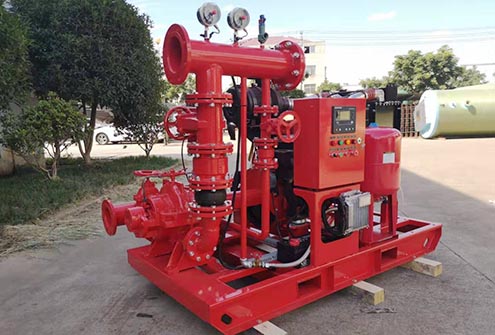The fire pump sealing is one of the key factors to measure the quality of the fire pump. So, how to check the seal ring of the fire pump? What are the requirements for the inspection of the seal ring?
1.The surface of the auxiliary seal ring is smooth and flat, and there must be no defects such as bubbles, cracks, notches, etc; the size of the end face should be uniform; Once bubbles, cracks appear on the seal ring, it means that the seal ring is leaking. For this reason, in the daily operation of the fire pump, it should be inspected irregularly, and once found, it should be replaced or repaired immediately.
2. The hardness of the auxiliary seal ring should be selected according to the pressure. The higher the sealing pressure, the higher the hardness; the lower the sealing pressure, the lower the hardness. Generally speaking, at this point, when the fire pump is manufactured, a professional manufacturer will have a standard, and it will carry out effective planning according to the actual model, use, and pressure of the fire pump, and choose the appropriate hardness. Such as auxiliary seals generally use synthetic rubber materials.
3. The compression amount of the auxiliary seal ring should be appropriate. If the compression amount is too large, the sealing effect is good, but the friction resistance is large, the assembly is difficult, and the swimming compensation ability during work is poor. The compression amount is too small, the friction resistance is small, the assembly is easy but the sealing effect is poor;
4.The compression amount of the auxiliary seal ring should consider its other functions, such as the static ring without anti-rotation, and the O-ring of the static ring plays the dual role of sealing and anti-rotation. The compression amount of the seal ring should be larger to prevent the static ring from rotating and cause the seal failing. The O-ring of the moving ring has a smaller compression amount under the premise of ensuring the sealing effect, so as to prevent the compression amount from being too large and the resistance being too large to allow floating compensation.

